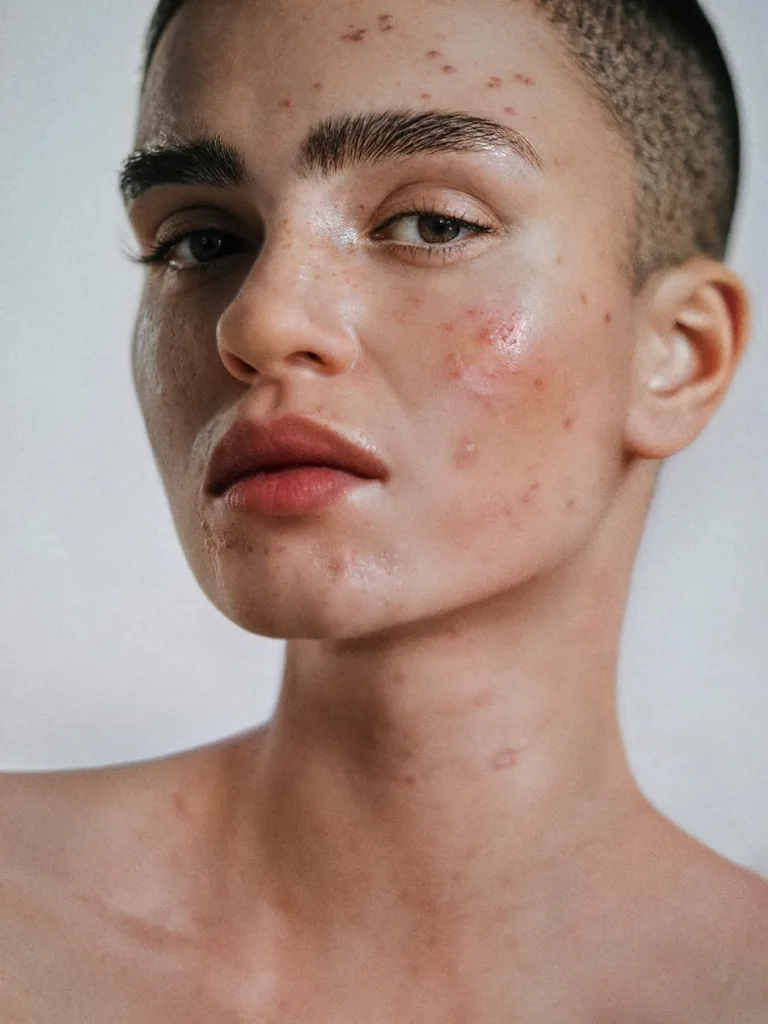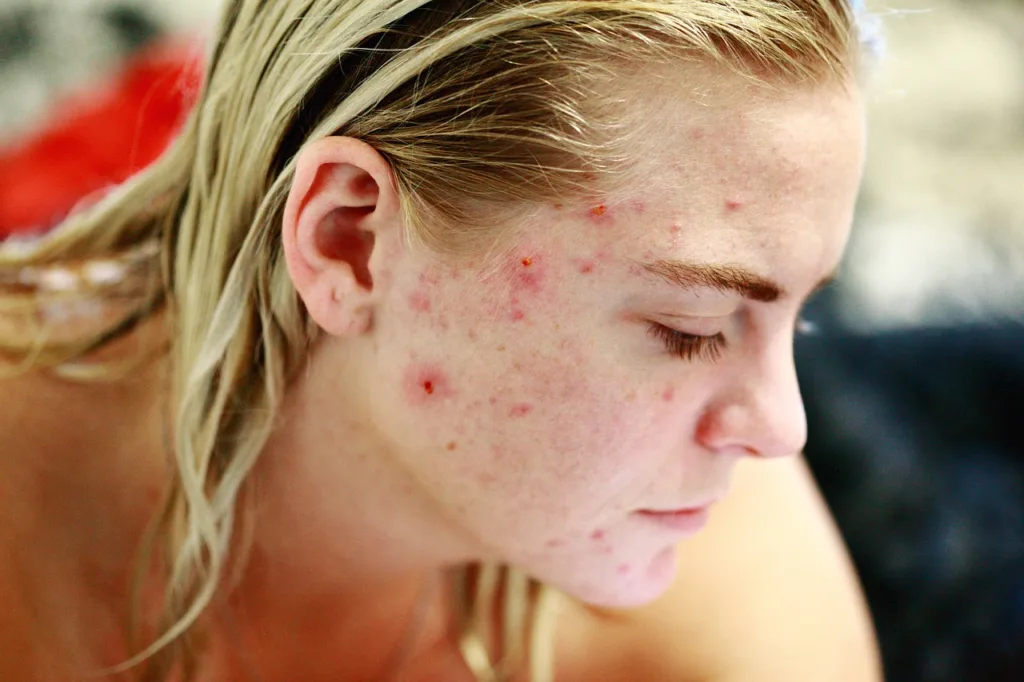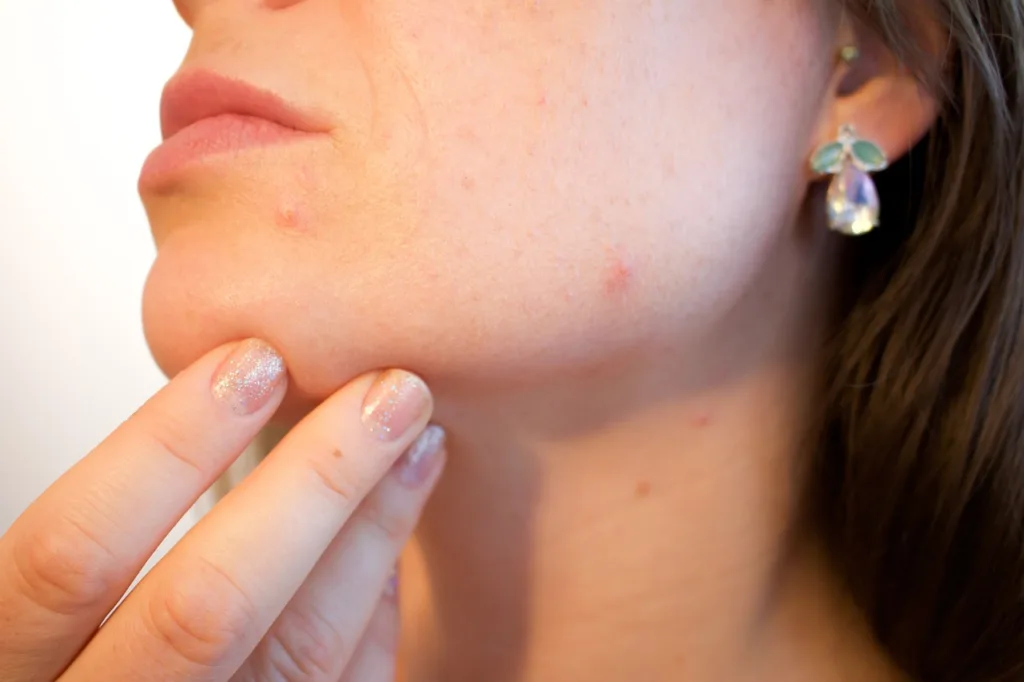
You know that acne is just acne? Sort of, anyway. Since the location of your facial acne is one of the largest indicators of what’s actually causing it, it turns out that treating it there may be very significant.
Acne, no matter where it appears, is caused by an overabundance of oil, debris, and dead skin cells clogging pores. That blockage develops into a comedone, or blackheads and whiteheads as they are most widely called. Bacteria can cause inflammation in the comedone, resulting in the formation of a pustule (papules packed with pus that appears “papule”) or papule (a reddish pimple). The worst types of acne are nodule and cystic pimples, which develop beneath the skin’s surface and are more likely to cause scars.
However, a number of psychological, behavioral, and environmental variables may also increase your vulnerability to breakouts in particular facial areas. Here, we’ll examine more closely at the main regions of the face that are prone to acne and possible causes.
Table of Contents
Acne on every part of your face
Forehead acne:
Almost everyone with oily skin has forehead acne at some point. However, your hairdo may make the problem worse. Doctors specifically mention that many patients obtain bangs to cover up this section of their skin since they are self-conscious about it. However, that will just make things worse because hair products, oil, and debris are trapped in the area around bangs.
Another factor that causes breakouts on the forehead is yeast that detaches from the scalp and accumulates in the pores along the hairline as sebum and oil build up in the area. According to doctors, the skin on the forehead can feel “warm and rough” instead of inflamed when you have this type of fungal acne, which isn’t technically a rash.
According to doctors, the most effective treatment for fungal acne is sodium sulfacetamide, a sulfur-based wash that can be obtained with a prescription. Due to the active chemicals like selenium sulfide in drugstore dandruff shampoo, some people have also had success curing fungal acne.
Nose acne:
The majority of nose breakouts are not inflammatory and are really minor. Doctors clarify that large cystic lesions on the nose are uncommon. “The main problem is blackheads, which are more prevalent in patients with extremely oily skin.” Once more, greasy skin is usually to blame in this situation. The nose is an extremely oily area on anyone, especially those with already oily skin, because it has more sebaceous glands surrounding it than other areas of the face.
Squeezing or picking at your blackheads is not the true solution to treat nose acne. Your nose’s pores are more likely to enlarge, gather more oil, dead skin, and bacteria, and get inflamed the more you play with it. It is preferable to apply a mild chemical exfoliation to gradually and gently unclog the pores; look for chemicals like glycolic acid, lactic acid, or salicylic acid.
If those don’t work, doctors advise applying retinoid creams or scheduling a chemical peel with your dermatologist to lessen the look of breakouts on your nose.
If you wear spectacles, make sure the bridge of your nose is not overly supported by them or too tight. Because undue pressure might prevent your dead skin from falling off naturally and end up clogging your pores, which can result in you guessed it acne.
Cheek acne:

“There are a few potential causes of acne in this area, but we can’t really pin it down,” doctors add. Generally speaking, cheek acne is caused by heredity or just the natural tendency of the skin to get acne there.
But it could also be caused by your daily routine, at least partially. According to doctors, basically anything that is rubbed on your face for an extended length of time can lead to an accumulation of dead skin cells, germs, and oil, which can eventually cause acne. Thus, if you hold or touch your face during the day, your hands as well as your phone, pillows, and sheets may be contributing to your breakouts on your cheeks.
Fortunately, there’s a rather simple fix for this issue: Keep everything clean, and try to avoid touching your face too often during the day. As a result, less oil and bacteria will be applied to the skin.
Chin acne:

The horrible acne that appears around your chin, jaw, and mouth. The term “beard distribution” is used by doctors to describe acne that appears in this area of the face. Hormone fluctuations are typically the source of this acne.
Because of this, doctors add, oral contraception is the most often used method of treatment for acne. The combination birth control pills—of which the FDA has authorized three versions especially for treating acne—have shown the best effectiveness, she continues. You’ll probably be advised to see your ob-gyn for a prescription if your dermatologist thinks your acne could have a hormonal cause.
Maintaining your usual acne-prevention techniques (routinely washing and exfoliating, cleaning your phone and pillows, etc.) can also help prevent acne in this area, even though this type of acne is typically hormonally driven.
you may also like : Treat hormonal acne : Here are 10 tips
